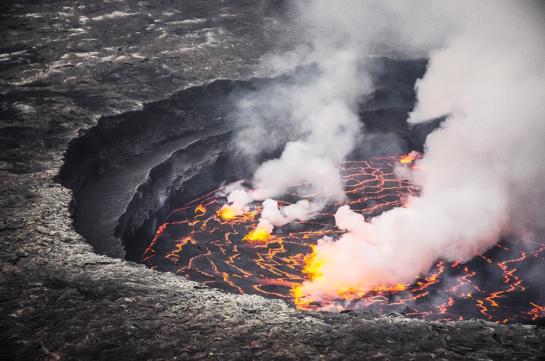Thursday 19 November, 4 PM CET
Prof. BENOÎT SMETS
Cartography and GIS Research Group, Dept. of Geography, VUB
Natural Hazards Unit, Dept. of Earth Sciences, MRAC-KMMA
ABSTRACT: Persistent lava lakes, are good opportunities to directly measure and study pressure changes associated with magma movements and evolution in the upper crustal plumbing system. They may also potentially provide precursory signals of an upcoming eruption, which make them interesting for volcano monitoring, as well. Few persistent lava lakes exist on Earth and they each exhibit specific characteristics, behaviours, and tectonic settings. As they are sometimes located in remote and difficult to access areas, the number and length of observations remain limited. In this presentation, we take advantage of the recent research performed on Nyiragongo volcano (North Kivu, D.R. Congo) to describe a persistent lava lake system and its dynamics. This case study is a nice opportunity to show how remote sensing can complement ground-based geophysical measurements and strongly improve the interpretation of such unusual volcanic systems.
BIO: Benoît Smets is fresh new assistant professor of remote sensing in the Department of Geography of the VUB, and Senior Researcher at the Royal Museum for Central Africa, Belgium. His research focuses on the study of natural processes controlling natural hazards of geological origin (aka. Geohazards). His work typically combines fieldwork and multiple remote sensing techniques (i.e., multispectral imagery, photogrammetry, radar interferometry, UAV surveys, etc.) to describe and interpret the physical mechanisms that control the occurrence of hazardous and disastrous events, in African context. Since 2007, he has developed an expertise on the Lake Kivu Rift Basin and Virunga Volcanic Province, both located in the western branch of the East African Rift System. His current position focuses on the use of multiple imaging remote sensing techniques to study geohazards and their interaction with urban environments, in the frame of a FED-tWIN project.

